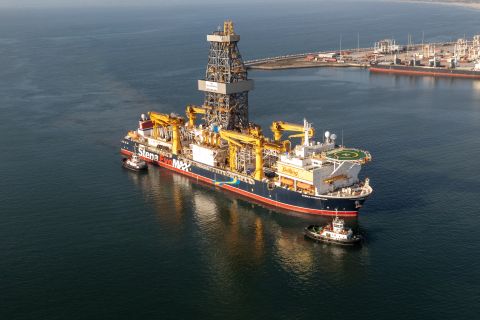Securities analysts ask but get no real answer: “What’s the new completion design?”
EOG Resources is reporting 22% greater production from Delaware Basin Wolfcamp wells in which it’s used this new design and 20% greater EUR.
So, what is it? That was asked myriad ways at least a dozen times in EOG’s earnings call in May—but non-answered as many times as well.
Bob Brackett, an analyst with Bernstein Research who notoriously doesn’t hold back, asked in June in a Bernstein conference. Again, the reply was a non-answer.
Arun Jayaram, an analyst with J.P. Morgan Securities, asked in a J.P. Morgan conference, also in June. Still, a non-answer.
The background: EOG has tested the new completion design in 39 Wolfcamp wells. In these, first-year production was 22% greater than that of similar wells which were completed with its typical design and EUR was up 20%. It expects to use the new design in 70 or so of its more than 350 new Delaware Basin wells this year.
Erin Faulkner, a senior editor at Enverus, acknowledged the news in a report this summer but didn’t have the recipe, either. EOG “has been tightlipped about the method,” she wrote.
Follow the clues
Here’s what we do know that may be clues in unlocking the new EOG frac-design cryptex without losing the frac.
• EOG first used the design in the Eagle Ford beginning in 2016, according to Ezra Yacob, chairman and CEO. It’s been successful, “but we didn’t see the same uplift that we see in the Permian,” he said in the May earnings call. “… It really has to do with the difference in rock type and their geological properties between the two plays.”
But, he added, it is the design it has switched to in the Eagle Ford and “in a lot of our emerging plays.”
• It’s more expensive but not by much.
• EOG is rolling it out in the Permian slowly, Yacob said, as “we just don’t want to outrun our learnings.”
• Its use is bespoke. Billy Helms, EOG president and COO, said at the J.P. Morgan conference, “We have learned that it is not going to work on every type—on every target. It’s going to be applicable to a lot of the deeper targets that we are seeing.”
• Depending on the mechanics of the rock it’s being applied to, “it involves constructing the wellbore in a way that lends itself to this new technique,” he added.
• The production uplift is in both oil and gas, Jeff Leitzell, executive vice president, E&P, said in May.
• EOG plans to test the recipe in some shallower formations, Leitzell added. But since the job costs more, “we just want to be mindful about how quickly we’re testing it and be strategic about the pace that we’re going ahead and putting these in the ground.”
• Helms said the rock type is critical “to why it works in some areas and so we’re cautiously moving through our program to make sure we test as we go to understand which targets lend themselves best to this design change and which ones don’t.”
• Helms didn’t say application in the wrong rock could be fatal. Rather, the caution is only “because it does cost a little bit more and we want to be very disciplined on how we apply that across the fields so we maximize the economics.”
• EOG is “actively testing it in all of our emerging plays,” Leitzell said, and will be “evaluating those results throughout the year.”
• Yacob said at the Bernstein conference the learnings are bi-directional in EOG’s multiple basins—the Powder River, Eagle Ford, Denver-Julesburg, Williston, Anadarko and Barnett; essentially, EOG is in all of the U.S. shale plays except the Fayetteville and Haynesville.
“We’re able to utilize data from across different basins, different geologic environments, different pressure regimes,” Yacob said. “And that’s really what continually helps our modeling and geologic understanding of any of the plays that we’re in.”
Recommended Reading
To Dawson: EOG, SM Energy, More Aim to Push Midland Heat Map North
2024-02-22 - SM Energy joined Birch Operations, EOG Resources and Callon Petroleum in applying the newest D&C intel to areas north of Midland and Martin counties.
Chevron Hunts Upside for Oil Recovery, D&C Savings with Permian Pilots
2024-02-06 - New techniques and technologies being piloted by Chevron in the Permian Basin are improving drilling and completed cycle times. Executives at the California-based major hope to eventually improve overall resource recovery from its shale portfolio.
Stena Evolution Upgrade Planned for Sparta Ops
2024-03-27 - The seventh-gen drillship will be upgraded with a 20,000-psi equipment package starting in 2026.
TotalEnergies Starts Production at Akpo West Offshore Nigeria
2024-02-07 - Subsea tieback expected to add 14,000 bbl/d of condensate by mid-year, and up to 4 MMcm/d of gas by 2028.
Shell Brings Deepwater Rydberg Subsea Tieback Onstream
2024-02-23 - The two-well Gulf of Mexico development will send 16,000 boe/d at peak rates to the Appomattox production semisubmersible.






